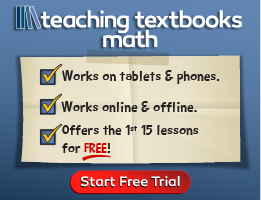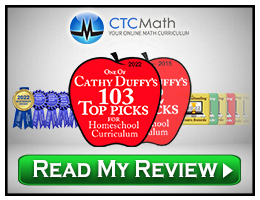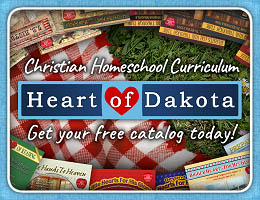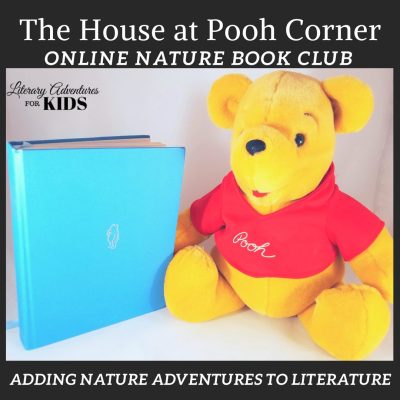Literary Adventures for Kids has published many Online Book Club studies for pre-kindergarten through high school. The studies are loosely identified by grade levels, with the exception of poetry, which is for all ages. For the most part, each Online Book Club is a study of a single novel, storybook, or work of literature, along with coverage of other aspects of language arts. Homeschoolers can purchase individual studies, bundles of studies, or memberships. When you buy individual studies or bundles, you own them forever.
Book Clubs, especially those for older students, can be used for independent study. However, Book Clubs work great for group classes, whether meeting in person or online, since most students are likely to enjoy sharing their adventures with others. If you can't find or create your own group class, you might use a Book Club within your family, perhaps including children a few years apart in age.
What They Cover
The Online Book Clubs started out as guides for studying novels, with some other aspects of language arts included. They've been expanded to include grammar, spelling, and composition to the point where a bundle or series of eight to ten Book Clubs can serve as your complete language arts program for a year, aside from a phonics/beginning reading course. They offer a separate Ready for Reading course I describe below.
Memberships
Memberships give you access to Book Clubs for the duration of your subscription. The Readers' Guild membership is the most comprehensive, giving you access to almost 200 courses for all grade levels, while Clubhouse membership gives you access to more than 100 courses for elementary and middle school. For high school, the Society of Literary Adventurers membership grants access to almost 100 courses. All memberships provide instructor feedback, a monthly interactive book club, live monthly poetry teatimes, workshops for parents, community support, and more. Scroll to the bottom of this page on the publisher's website for a chart comparing the three memberships.
Book Clubs for PreK-5
This review focuses on Book Clubs for pre-kindergarten through fifth grade. Click here to read my review of Online Book Clubs written for older students. There is some overlap with Book Clubs that stretch across middle school levels.
When you join even a single Book Club, you have access to several online resources. These include a list of project supplies; lesson plans; a scope and sequence; printable activity pages; suggestions for adding work on spelling, grammar, vocabulary, and writing; copywork and dictation instructions; a section titled "How to Grade Your Student;" and rabbit trails with suggested topics to explore.
Bundles of Book Clubs make it easy to choose a set of studies, knowing that they have been planned to avoid repeating grammar or writing concepts. For elementary and middle school students, the publisher lists these bundles for the early elementary and upper elementary grades:
- Year 1 Curriculum
- Year 2 Curriculum
- Year 3 Curriculum
- Year 4 Curriculum
- Year 5 Curriculum
- American Classics Literature Series
- British Classics Literature Series (e.g., The Paddington Treasury and Doctor Doolittle)
- World Literature Series (e.g., Kite Flying and Anne Frank: The Girl Heard Around the World)
- Modern Literature Series (e.g., Esperanza Rising and The Green Ember)
- Nature Book Clubs Series
- Winter Book Club (a one-semester bundle)
- The Christmas Book Club (four Book Clubs)
I don't have space to list the Book Clubs included in each series, but I'll use the Year 1 Curriculum as an example. It includes the Book Clubs for:
- The Giving Tree
- The Golden Egg Book
- Backyard Fairies
- Turtle in the Sea
- How The Grinch Stole Christmas
- Little Bea
- "There Are Rocks in My Socks!" Said the Ox to the Fox
- Olympig!
- The Poky Little Puppy
- Lost and Found Cat
Most books for young children are picture books, which serve as jumping-off points to investigate topics related to each book's content. The grammar elements covered within this series are conjunctions, contractions, dialogue, onomatopoeia, nouns, pronouns, verbs, number words, and punctuation. In addition to copywork, the studies include brief writing projects, but parents can assist young students as needed. When ready, students write sentences via dictation that they have practiced previously through copywork.
As children mature, the books are lengthier, and students begin to learn literary analysis. For example, some of the books read for the Book Clubs included in the Year 5 series are:
- Island of the Blue Dolphins
- Charlotte's Web
- The Mouse and the Motorcycle
- The BFG
With lengthier books, the reading is broken down over several days, and writing projects gradually become more challenging. Grammar instruction is much more frequent. For instance, the Book Club for Charlotte's Web has students copy sentences and then identify both simple and complete subjects and predicates in those sentences. They also watch at least three videos on grammar topics. Also, several vocabulary words are taught throughout that study. The culminating writing project has students write a short story, concentrating especially on a hook sentence to grab their readers' attention.
Students who have learned to read and write will need a notebook for their notes, vocabulary, and writing. A Nature Journal, available as a bonus with a membership, can be used with any of the studies labeled as Nature Book Clubs.
How Book Clubs Work
Navigation for each study is laid out sequentially, generally having you read sections of a book, then doing activities before moving on to the next section. For example, the study of The House at Pooh Corner is divided into four sections, with two or three chapters of the book to be read at the beginning of each section. However, the study of The Legend of the Indian Paintbrush has you read the entire book before starting any of the activities, and sections are arranged by topics rather than by groups of chapters.
The varying lengths of the books dictate a different approach for each study. For shorter books, there is a section in the lesson plan titled Reading and Vocabulary that students will complete before they start reading the storybook. For lengthier books, there are Reading and Vocabulary sections at the beginning of each section of the study for a group of chapters. Whatever the layout, the Reading and Vocabulary instructions say, “As you are reading, write down any sentences or paragraphs that you like or have special meaning to you in your journal.” They also tell students to write down unfamiliar words or phrases and look them up, copy a passage from the book into their journal, and watch for spelling, punctuation, and capitalization errors. These are the same instructions as those for Online Book Clubs for older students, but they are vague, and I doubt many students will do these things without a nudge and assistance from a parent or teacher. Parents might assist young students with some of these tasks. Explicit grammar instruction is included occasionally via online videos from creators such as McGrammar and Freeschool. Spelling and handwriting are learned and practiced primarily through copywork and dictation. And most Book Clubs have a concluding writing project that is often combined with art or another hands-on project.
Some homeschoolers might prefer more thorough and explicit coverage of grammar, spelling, handwriting, vocabulary, and composition skills. In that case, you can use Book Clubs primarily as the literature component of language arts alongside another program, picking and choosing activities most useful for each student.
Children can read the story on their own if they are able, or you can read it aloud together. After children have read or listened to the parts of the book indicated by the lesson plan, you will be ready to investigate the rabbit trails, magic dust, and outside adventures.
Rabbit trails are topics drawn from the content of the story. For example, in the study of The House at Pooh Corner, some topics explored are bears, animals in winter, owls, and trees. For The Legend of the Indian Paintbrush, children learn about topics such as prairies, prairie wildflowers, legends about plants, and sunsets.
Magic dust is the name for hands-on activities. For The House at Pooh Corner, children make a hibernating animal den, play a game of “Pooh sticks,” draw a "haycorn" (Pooh's way of saying acorn), and make leaf animals. For The Legend of the Indian Paintbrush, students paint with an Indian Paintbrush or other flowers, make paint with berries, create a wildflower bookmark, and learn how to create sunset effects with a flashlight, a container of water, and milk.
Outside adventures for the nature studies might not fit the calendar or the weather perfectly, but the suggestions for each adventure offer enough options that you should be able to choose at least one of them. For example, for The House at Pooh Corner, the first outside adventure is to go outside on a snowy day. Students are to look for animals in winter coats, a frozen pond, and animal homes or dens. If it’s the wrong time of year or it doesn’t snow in your area, other suggestions, such as building Eeyore a home of sticks or doing a nature sketch, might be more practical.
Similarly, one of the outside adventures for The Legend of the Indian Paintbrush is to go outside on a spring day. Children are to observe different flowers, animals, and insects. The lesson plan then tells students to pick a flower to dry and put in their notebook. They are also told to look up and identify flowers they saw outside then note these in their journal. Parents can easily discuss outdoor observations with preschoolers and kindergartners, but children will need a great deal of assistance to look up and identify flowers and record that information. Parents will need to adapt the outside adventures to fit both their situation and the ages of their children. Here and elsewhere, lesson plans occasionally seem to misidentify the age range of their audience. Still, there are plenty of activities suitable for the target audience.
All studies end with a party. Suggestions for food, decorations, and activities are at the end of each lesson plan. Party activities include arts and crafts along with the food. Some of these look like so much fun that you might want to borrow one or two to use earlier in the study, since you can’t possibly do all of them at your party!
Each study should take about a month to complete, but you might add an extra week to plan and execute the party. You are also free to skip activities if you wish, which might shorten the time it takes to complete a study.
Ready for Reading
I mentioned that the Book Clubs can serve as your complete language arts program, but they don't teach children how to read. To remedy that, Literary Adventures for Kids has created Ready for Reading, a 26-week, digital program with a curriculum guide, lesson plans, worksheets, assessments, printable flashcards and alphabet strips, phonics games, 10 readers, and My First Spelling Book. This course might be the starting point for young children before jumping into Book Clubs, although pre-readers can still participate in many studies before they learn to read.










